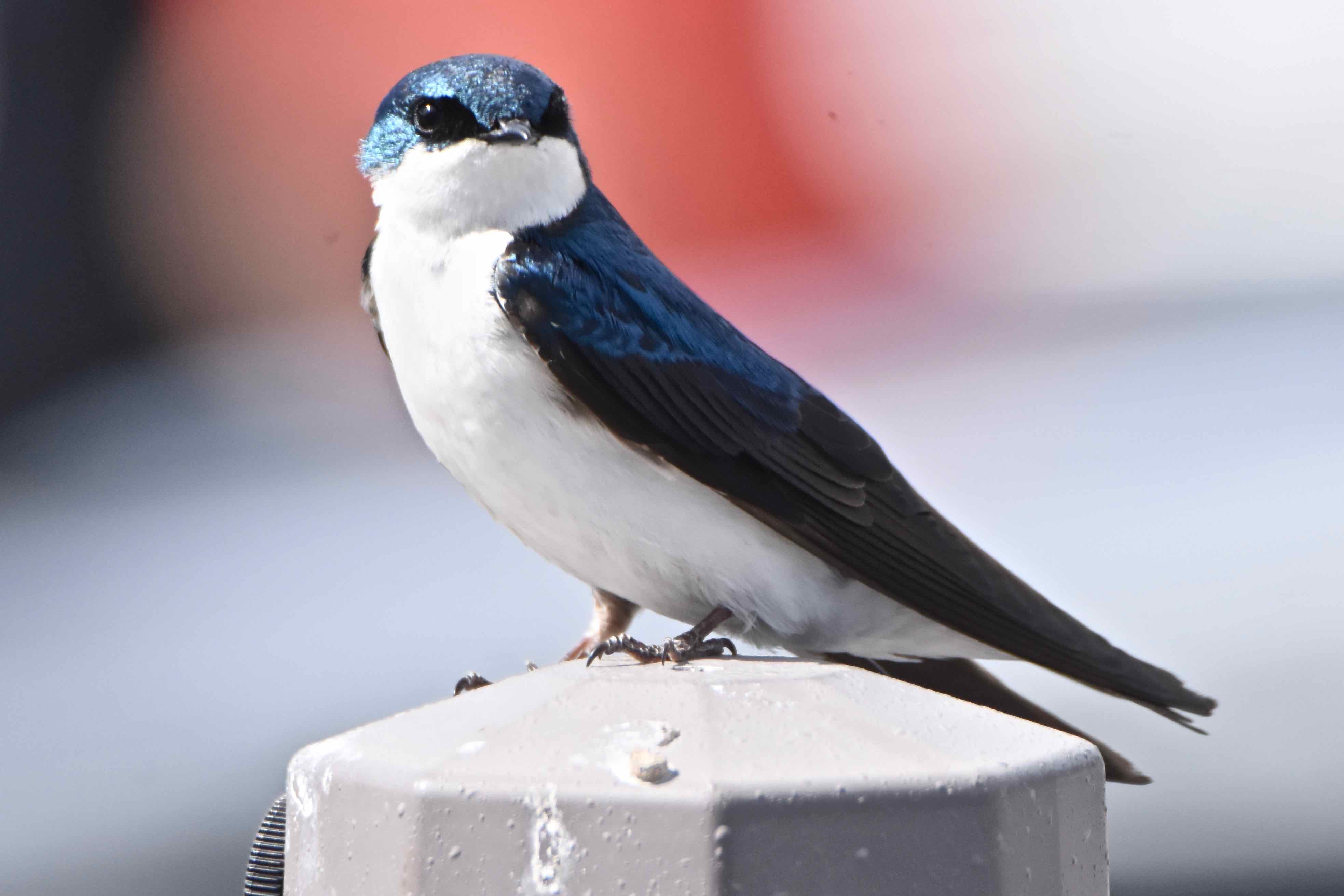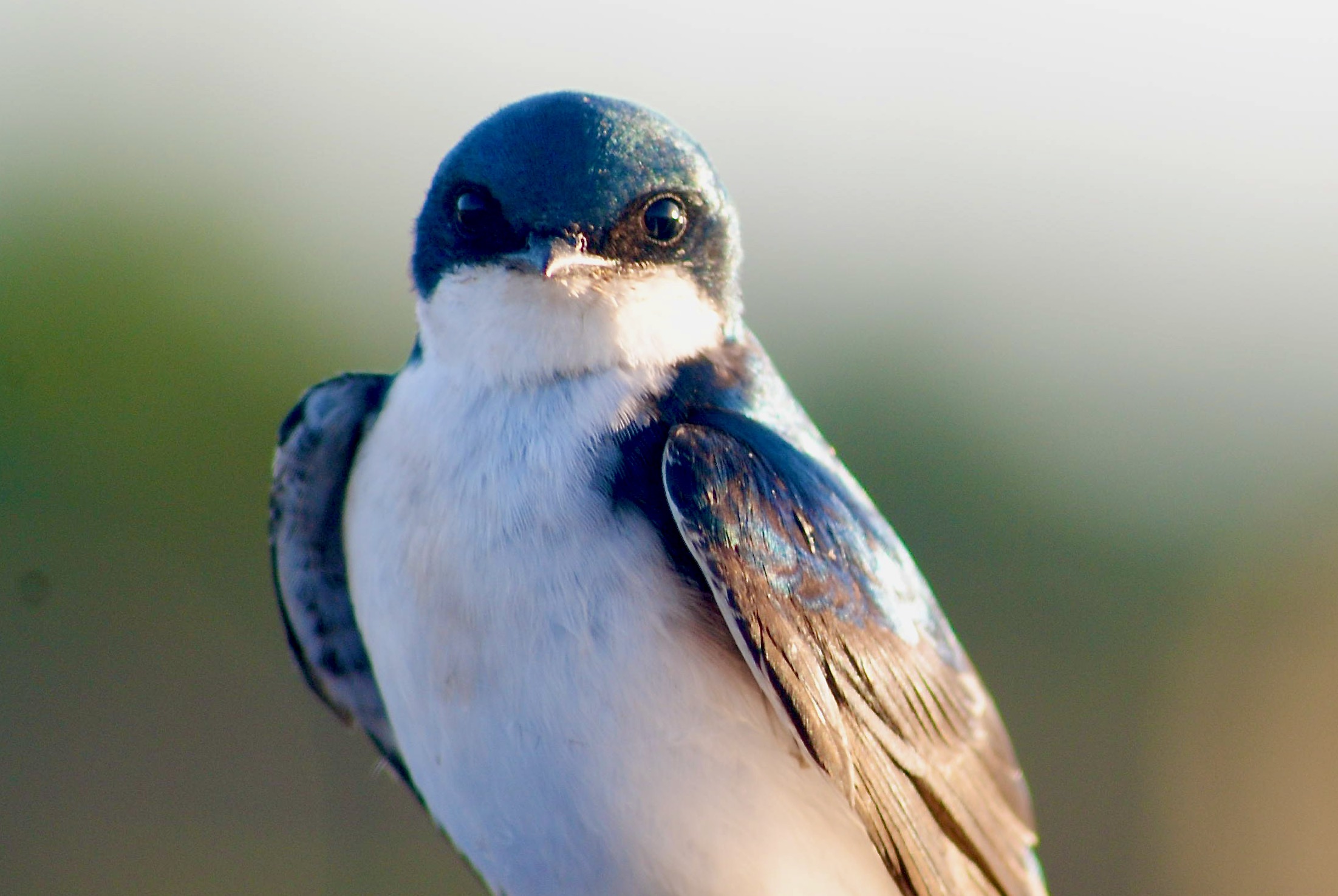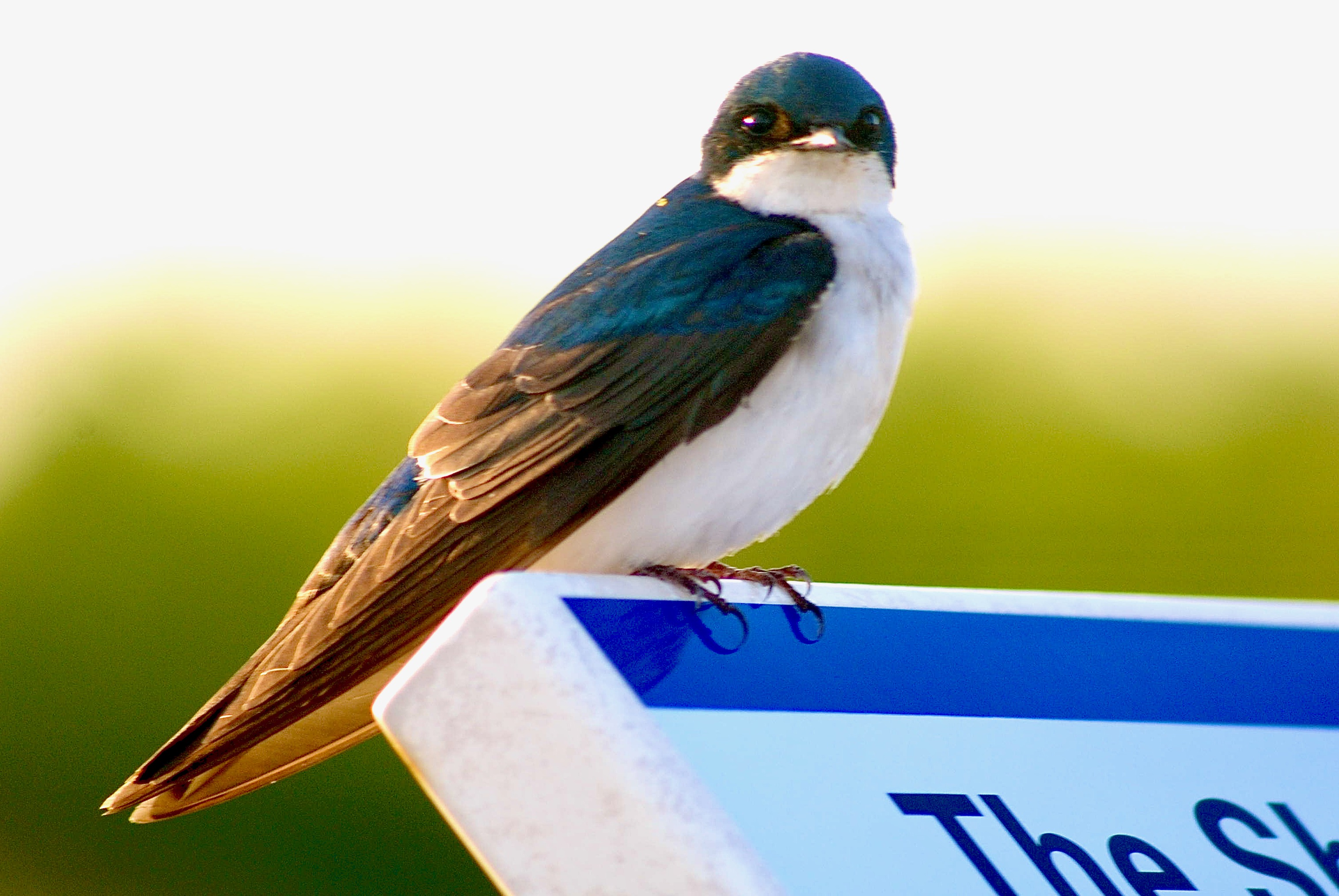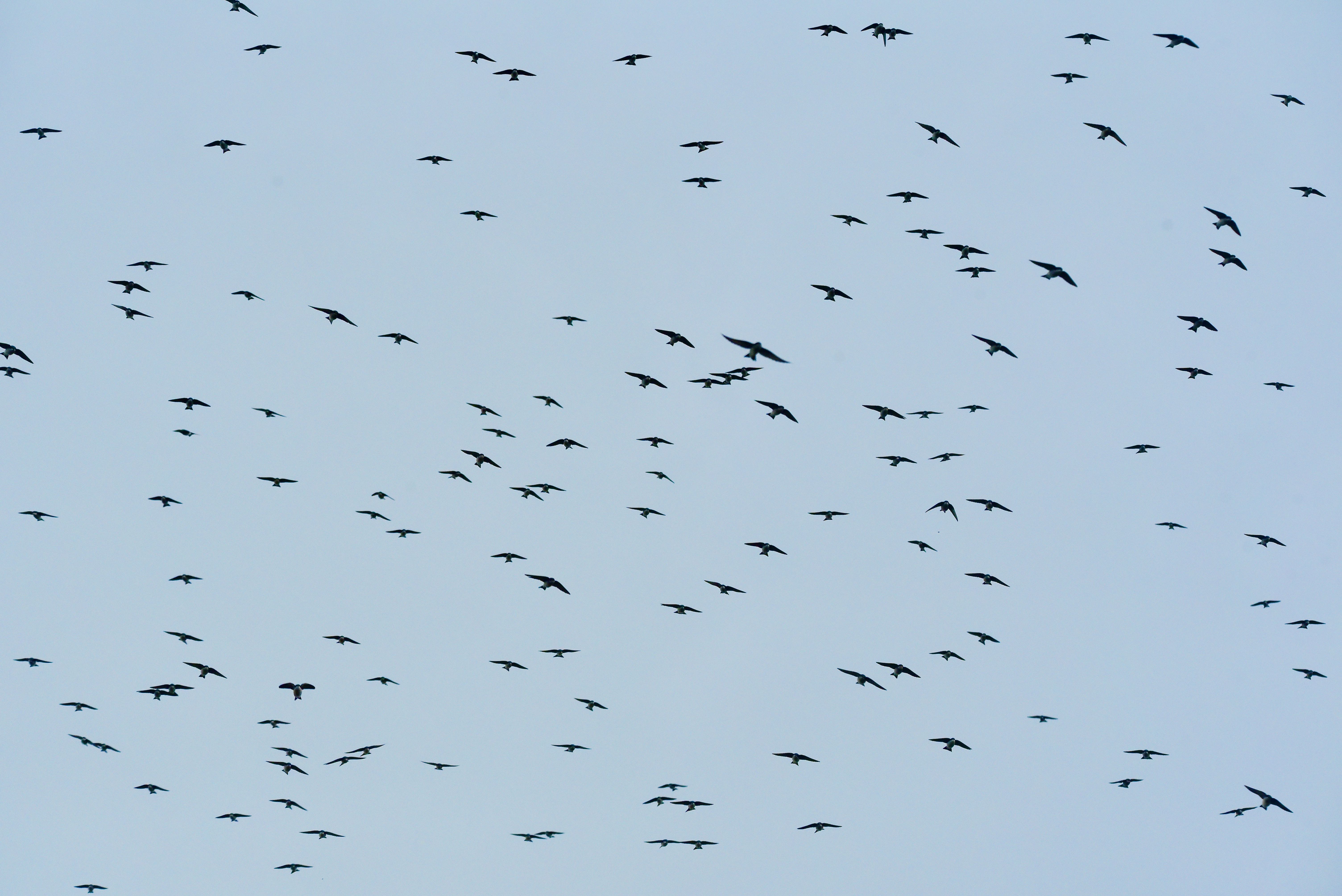
Tree swallow, photographed at Yellowstone National Park, Wyoming, in June 2017. Others taken at Green Cay Nature Center, Boynton Beach and at Pine Glades Natural Area, Jupiter.
Tree swallows are aerial dancers, their choreography a seemingly endless mix of darting and diving, banking and soaring as they gracefully chase after their next meal.
Scientifically known as Tachycineta bicolor, these small song birds are found over most of North America at one time of year or another. They nest as far north as trees grow, but retreat south to warmer climes come cold weather. Their winter retreats include Florida, the Gulf Coast states to Texas, the southwestern United States, Mexico, Central America and a few islands in the Caribbean, mainly Cuba and Jamaica. Some tree swallows reside year round in the general vicinity of Chesapeake Bay and parts of California.
Tree swallows are absolutely gorgeous birds. Both males and females are iridescent blue-green above, white below. Younger females may be brownish. They only go about five or six inches long but their wing span can approach 14 inches. They’re streamlined in shape, with a comparatively large, stocky head. Their legs are short; their feet are small. They have short, thin triangular bills, perfect for snapping up flying insects.
Younger tree swallows might be confused with female purple martins, which have a similar dark/light color pattern, but the purple martin is a grayish or dirty white on the underside, while tree swallows are more of a pure white. The bill on the purple martin is more stout, while the tree swallow is thin and flat. The tail is square or slightly notched.
Like a lot of migratory birds, tree swallows live dual lives. During mating season, they nest in loose colonies but are extremely territorial. Both males and females defend their slice of the colony. Males will sing out to mark their turf, so to speak.
But in migration and at their winter roosting grounds, they become extremely social, sometimes appearing in absolutely huge flocks that can number in the thousands and moving in sync with each other. These flocks provide protection since the more eyes that numbers provide make it easier to scout for food, important during migration. The photo below at the right shows one such flock numbering in the hundreds and "raiding" wax myrtle trees for their berries at Pine Glades Natural Area near Jupiter.
Tree swallows arrive in Florida as early as late August and stay through May. They can be found throughout the state. They favor open areas in winter, including meadows near water. Freshwater and salt water marshes afford both food and sheltered places for roosting.
As we noted above, tree swallows are largely aerial foragers, picking off bugs on the fly. Occasionally, they'll glean insects off a leaf or the ground. Berries make up about 20 percent of their diet, more than other swallow species typically eat, but their digestive system are specially adapted to handle the extra fruit. Favorite habitat during nesting season includes open fields near bodies of water. They are tree nesters by and large, ideally finding a home in a tree cavity. But tree cavities can be scarce commodities in the avian world, so tree swallows easily take to nest boxes, holes in buildings or old cliff swallow nests. They'll return to the same nesting grounds year after year, males more than females. Males might mate with the same female year after year, but not necessarily. And when they do, it might be more fealty to the site than to the female.
The actual nest is a cup made of grass and feathers. Females will lay four to six eggs, typically, which will require 11 to 19 days of incubation, which mom will handle. They'll remain nest-bound for 15 to 25 days; both mom and dad share the chore of feeding their offspring. Parents will continue to feed them for a few days after they're fullly capable of flying. They'll be fully mature at one year. Their lives most likely will be short: on average only 2.7 years. Nearly 80 percent will die during their first year; more than 60 percent of the survivors will die each subsequent year. The oldest known tree sparrow was more than 12 years old.
Threats include predation by other birds, colliisions with cars and buildings, being shot — they are protected by the Migratory Bird Treaty Act of 1919 — rats, dogs, cats, electrocution, entanglement in line and being trapped inside buildings. Also rat snakes, raccoons and bears.
According to some estimates the tree swallow population declined by nearly half between 1966 and 2014. Macro threats to the population include loss of habitat and suitable nesting and exposure to high levels of pesticides and contaminants because of their insect-rich diet. Still, they are abundant birds: estimates put their numbers between 17 million and 20 million globally.
Fun fact: Tree swallows have the longest intestines of any swallow. The elongated innards allows them to eat more berries and other plant matter than other swallows.
Tree swallows are members of Hirundinidae, the family of swallows and martins. There are about 90 members of the family worldwide.
Green Cay Nature Center and Pine Glades Natural Area



